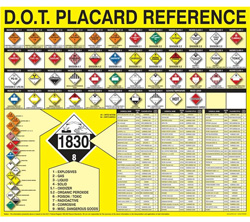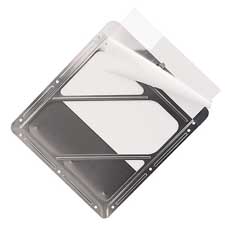| The Home page of ILPI's Safety Data Sheet (SDS) Resource, the leader in SDS information since 1995! | |
| The history and philosophy behind this resource. | |
| A curated collection of books and reference materials concerning Safety Data Sheets and closely related topics. | |
| Paste your plain text SDS into the SDS-Demystifier, and it will be converted into a hypertext-enriched document with links to detailed explanations of each key term. | |
| An extensive list of frequently asked questions about Safety Data Sheets including regulations, content, compliance, and more. | |
| A humorous take on Safety Data Sheet jargon. Fill in the blanks on our entry form to generate a personalized Unsafety Data Sheet to share with your coworkers. | |
| Since 1995, we've maintained this massive curated list of the best places to find Safety Data Sheets on the Internet. | |
| Way more than a glossary, this hypertext-enhanced resource covers hundreds of SDS-related terms and expert knowledge. Each entry includes both the SDS relevance and links to additional authoritative resources. | |
| Archived results of Safety Data Sheet related polls taken by some of our millions of site visitors | |
| You are here! The OSHA regulations behind SDS regulations, including the inspection guidelines and over 400 official interpretations letters under the Hazard Communication Standard | |
| Commercial suppliers of SDS authoring and management software as well as cloud compliance services. | |
| Commercial companies that will create SDS's for your specific needs as well as SDS translation companies. |

Safety signs, banners, and scoreboards? Get yours at Safety Emporium!
| Title: 10/04/2021 - Single HCS Compliant Shipping Label that includes DOT and/or State Requirements | |
| Record Type: Interpretation | Standard Number: 1910.1200(f)(1), 1910.1200(f)(3), 1910.1200 App C |
OSHA requirements are set by statute, standards and regulations. Our interpretation letters explain these requirements and how they apply to particular circumstances, but they cannot create additional employer obligations. This letter constitutes OSHA's interpretation of the requirements discussed. Note that our enforcement guidance may be affected by changes to OSHA rules. Also, from time to time we update our guidance in response to new information. To keep apprised of such developments, you can consult OSHA's website at https://www.osha.gov.
October 4, 2021
Mr. Kirk Nelson
Systems Administrator II, Authoring Services
MSDSonline - a VelocityEHS Solution>
222 Merchandise Mart Plaza, Suite 1750
Chicago, IL 60654
Dear Mr. Nelson:

DOT shipping signs and labels plus a host of safety and compliance posters are available at Safety Emporium.
Thank you for your letter to the Occupational Safety and Health Administration 's (OSHA) Directorate of Enforcement Programs, regarding label requirements when shipping containers under OSHA 's Hazard Communication standard (HCS), 29 CFR § 1910.1200. This letter constitutes OSHA 's interpretation only of the requirements herein and may not be applicable to any situation not delineated within your original injury. Your questions are summarized below, followed by our responses.
Background: You question whether it is allowable to create a single hazardous material shipping label that comprises required labeling elements of OSHA 's HCS, the U.S. Department of Transportation (DOT), and the State of California 's Proposition 65 (CA Prop 65).
NOTE: The responses provided to your questions pertain only to OSHA 's HCS. Label requirements pertaining to DOT and CA Prop 65 should be addressed to those authorities.
Question 1: Is it acceptable to combine DOT shipping label requirements with HCS shipping label requirements (29 CFR § 1910.1200(f)(1) and Appendix C) on a single label?
Response: OSHA 's HCS requires each immediate container of a hazardous chemical leaving the workplace be labeled, tagged, or marked with information specified in 29 CFR § 1910.1200(f)(1)(i)-(vi). When a hazardous chemical 's immediate container is also the shipping container it must be labeled in accordance with the HCS paragraph (f)(1) label requirements, aside from any DOT required elements. For example, when shipping chemical drums, totes, tanks, or other containers that serve as a chemical 's immediate container, both an HCS label and DOT pictogram are required.
While Appendix C to § 1910.1200, Allocation of Label Elements section C.2.3.3,, states that the corresponding HCS pictogram shall not appear, the DOT does not view the HCS pictogram as a conflict and for some international trade both pictograms may need to be present on the label. OSHA has proposed to update Appendix C, section C.2.3.3, to reflect this. See 86 Fed. Reg. 9576, 9698-99 (Feb. 16, 2021). In the meantime, the agency will allow both DOT and HCS pictograms for the same hazard on a label. See OSHA Brief: Hazard Communication Standards: labels and pictograms for additional information. This Brief can be found at: www.osha.gov/Publications/OSHA3636.pdf.
Question 2: Is it acceptable to include the CA Prop 65 statement on a shipping label or would this contradict or cast doubt on the required HCS information?

These clear protective polyethylene shields for DOT placard holders from Safety Emporium can save you $$ on DOT placarding costs!
Response: OSHA views the inclusion of the CA Prop 65 statement as supplemental information to the HCS label. The HCS does not prohibit a manufacturer from adding supplemental information to a label, as long as it does not contradict or cast doubt on the validity of the information required by the HCS. See section C.3.1 of Appendix C. Supplemental information need not be physically separated from the required information on the label; however, section C.3.2 provides that the placement of supplemental information must not impede identification of information required by the HCS. How a manufacturer designs the layout of the label is up to the preparer, as long as all the required HCS information is presented together. See 29 CFR § 1910.1200(f)(3); see also OSHA Letter to Ms. Erin McVeigh.
Thank you for your interest in occupational safety and health. I hope you find this information helpful. OSHA 's requirements are set by statute, standards, and regulations. Letters of interpretation do not create new or additional requirements but rather explain these requirements and how they apply to particular circumstances. This letter constitutes OSHA 's interpretation of the requirements discussed. From time to time, letters are affected when the agency updates a standard, a legal decision impacts a standard, or changes in technology affect the interpretation. To ensure that you are using the correct information and guidance, please consult OSHA 's website at www.osha.gov. If you have further questions, please feel free to contact the Office of Health Enforcement at (202) 693-2190.
Sincerely,
Kimberly Stille, Acting Director
Directorate of Enforcement Programs
The original official public domain version of this document is available from OSHA at https://www.osha.gov/laws-regs/standardinterpretations/2021-10-04.